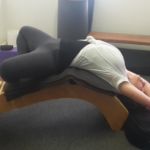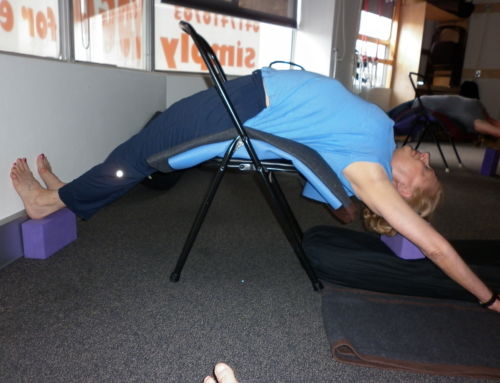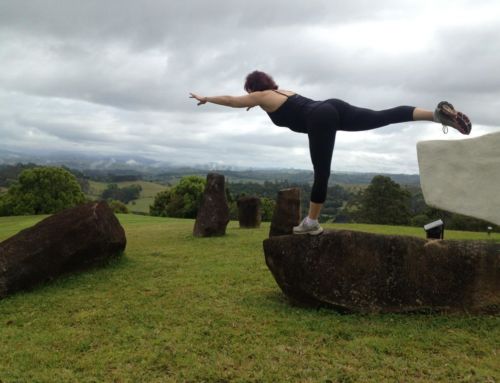Honouring your Cycle
Like everything else in nature our bodies and lives flow in rhythms and cycles. When we are in tune with our body’s rhythms and cycles we flow gracefully through our experiences, our health is good, and our relationships steady, while any disturbance in our natural order typically results in disharmony and dis-ease.
How often do you notice and observe the natural cycles of your body, energy and moods?
A time to go within
Menstruation was traditionally observed, by many cultures, as a time to turn inward, withdraw from one’s usual routine, and reconnect with self. In India, women were relieved of their usual duties on their first day of menses, and encouraged to observe their spiritual practices alone. It is a time to avoid physically or mentally strenuous activities (considered in Ayurveda to be heating), and focus on calm, restorative and emotionally nurturing (cooling) pastimes.
Do you stop or alter your schedule to accommodate or nurture yourself during your menstrual cycle?
Wouldn’t it be wonderful if we could tell the boss we’re taking a menses health day!
Modern lifestyles, and the accompanying stress of keeping up with them, can easily disrupt our natural rhythms and present with health, energy and mood imbalances.
So what can we do? Stress is ubiquitous, and the world is what it is, but the consistent and dedicated practice of yoga and meditation can help us navigate the rapidly changing landscapes of modern life.
Yoga can help regulate your monthly cycle
When we commit to taking time out to focus inward with intention and awareness, our yoga practice becomes a pillar of support and balance in our daily lives. Yoga can help regulate your monthly cycle and keep you more physically and emotionally balanced. Yoga helps you get in tune with your body and understand that menstruation is a powerful link between women with few exceptions we all share this experience at some point in our lives.
Listen to your body
Accept and respect the rhythms of your body. The body has its own innate intelligence. As the body moves through the various stages from ovulation to menstruation, hormone levels rise and fall, and you may notice how you feel more sociable and energized around mid cycle (ovulation time), but feel the need to withdraw and stay quiet in your own energy just before your period begins. Notice how your cycle varies from month to month, or season to season – is there a pattern?
Know yourself
Know how you feel and what you need at any given point in your cycle, so that you can make the most nurturing and supportive choices for your body, mind, and spirit. Patanjali wrote that we should learn to know ourselves, and our bodies, through the practice of yoga, and practice according to our energy levels, strength, or mental focus on any given day.
How often do you make time to listen to your body and give yourself what you need?
You don’t have to skip your practice just because it’s that time of the month.
Every woman experiences her menstrual cycle differently, but unless you are experiencing extreme heavy periods, there is no reason why you couldn’t practice, provided that you stay within the guidelines of what is safe and appropriate for you at the time. It is important to acknowledge that your mind and body are in a different state at this time:
- Physically, the body is shedding the lining of the uterus and losing blood. You may feel physically uncomfortable, tired, and/or experience menstrual cramps and aches
- Hormone levels differ, which may result in emotional sensitivity or typical menstrual symptoms such as headaches, irritability, tearfulness, or sleep disruption.
A special sequence for women
It is easy to adapt your practice at home, or in class, for menstruation. The late Dr Geeta S. Iyengar created a specific sequence for women to practice during this time. The menstrual sequence focuses on restorative supine and forward bending poses for the first couple of days of menses, and includes supported standing and seated poses against the wall or trestle for the remaining days. The practice should be restful and soothing to the nervous system, and there are some groups of poses which should specifically be avoided.
Which asana should be avoided during menstruation and why?
THE INVERSIONS
(headstands, shoulder stand, elbow, full arm, and hand balances, plough pose)
As tempting as it may seem to join in with the rest of the class, ALL inversions, including Adho Mukha Svanasana (Down Dog) and Viparita Karani (legs up the wall with a bolster) should be avoided until bleeding has stopped completely. According to Geeta S. Iyengar, these poses “dry up†the uterus, stopping the flow by reversing it. In Ayurveda, all bodily substances which are meant to be eliminated are referred to as ‘mala’ (waste) and must be excreted, or else they will invite disease when they are retained. Inversions check the flow of menses, and when done regularly during menstruation, especially together with strenuous practice or physical training, may cause the menstrual cycle to cease altogether.
The uterus is also heavier during menstruation (especially in women who have had children, have a heavier flow, or suffer from fibroids) and therefore turning upside down draws the uterus toward the head, causing the ligaments to overstretch and increasing risk of prolapse or herniation.
ABDOMINAL POSES AND CLOSED TWISTS
Poses that tighten or constrict the abdomen bring hardness and may worsen symptoms of cramping, pain or bloating. The wringing out action of twists may increase the flow causing a heavier bleed. Twisting also activates the liver which may exacerbate menstrual headaches.
Always keep the abdomen soft and open when practicing during your period. However, some women find relief from cramping and pain with firm pressure to the abdomen while bending forward.
UNSUPPORTED BACKBENDS, STRENUOUS SEQUENCES AND HAND BALANCING POSES
These practices increase ‘heat’ in the body and can cause fatigue and depletion, especially during peri-menopause. They aggravate and over stimulate the nervous system increasing the likelihood of experiencing irritability, anxiety or mood swings. If you are prone to fatigue, anaemia, heavy bleeding, dizziness or faintness during your cycle, use a chair for standing poses, or avoid the standing poses altogether – come to a restorative class that week – I teach one every Sunday.

There are different views on this exclusion, and many yoga teachers and students with a regular practice may disagree, but Judith Hanson Lasater writes that hormonal changes during your period (similar to pregnancy) create instability in the ligaments that hold the sacrum and pelvis together, rendering them susceptible to injury and contributing to the lower backache that many women experience during their cycle. The choice is yours, with the information given, do what feels right for your body.
Some general tips for practicing during menstruation by Patricia Walden (from The Woman’s Book of Yoga & Health by Linda Sparrowe and Patricia Walden 2002):
• Practice with awareness – work internally, rather than aggressively or muscularly
• Don’t try to get better at or go deeper into a pose
• Resist getting caught up in the energy of the class and joining in with poses which are inappropriate for you – stick to the menstrual sequence during the first 2 or 3 days of your cycle, and join in gently for the rest
• Relax completely into each pose
• Soften your abdomen and relax the vaginal walls completely – now is not the time to tone this area
• Let the head be quiet and supported to soothe the nervous system
• Breathe deeply and evenly to bring an internal focus to your practice and relax and rest the physical body
• Never do inversions!
How yoga can help with menstrual problems
Firstly, the regular practice of yoga reduces stress, which is often the underlying cause of hormonal imbalances and other menstrual problems. Yoga also works directly on the endocrine system – the glands which produce hormones that regulate metabolism, reproduction, sexual function, sleep, mood and other things in the body. Conditions such as PMS, polycystic ovarian syndrome (PCOS), fibroids and endometriosis are all supported by the regular practice of yoga throughout the cycle.
PMS
Yoga helps alleviate premenstrual syndrome by calming the nervous system and reducing effects of stress, balancing hormones, increasing blood flow to the reproductive organs and strengthening the muscles which support them, as well as offering specific poses throughout the monthly cycle to support and balance your whole system. Modifying poses to rest the forehead on a bolster/chair can soothe irritability by reducing tension and cooling the brain. When not menstruating inversions should be practised to help to create balance and stability in the body’s systems, especially chair shoulder stand and Halasana (plough pose).
HEAVY BLEEDING
During extreme heavy bleeding periods you may feel weak and exhausted, in which case it may be advisable simply to rest from all activities, otherwise it is safe and beneficial to practice a restorative sequence for menstruation including specific “drying†asana such as Ardha Chandrasana (Half Moon pose) supported against wall or trestle.
CRAMPING OR PAINFUL PERIODS
Forward bends with a folded blanket or bolster pressed firmly against the abdomen may feel soothing, as might Supta Baddha konasana (bound angle pose) with the hips and legs resting on a bolster or over the backbender.
LOWER BACKACHE
A painful distended abdomen and lower backache during menstruation may be aggravated by tight hip flexors. The psoas muscle connects the front thigh bone to the lumbar vertebrae. When this muscle shortens, the tight hip flexors pull on the lumbar spine causing the pelvis to tilt forward (putting pressure on abdominal organs) and deepens the arch which places strain on the muscles of the lower back. Regular practice of Supta virasana (reclining hero pose) over a couple of bolsters gently stretches the thighs and hip flexors, easing the strain on the lower back.
MENOPAUSE AND HOT FLASHES
For a while before menstruation ceases completely, a woman may experience many changing symptoms and emotional up and downs. Yoga can help ease this life transition. The regular practice of asana and pranayama (yogic breathing practice) is particularly effective at reducing the severity of hot flashes, heart palpitations, night sweats and sleeplessness accompanying peri-menopaus. All the cooling poses (forward bends, especially with a supported head, and shoulder stand) help to reduce heat and dryness in the system, and reduce irritability.
Care for your body and honour yourself every day
It is important to support a healthy menstrual cycle with good nutrition and a balanced lifestyle. Make it a priority to get enough rest, stay well hydrated and eat quality food. Be selfish and claim some “me time†every week to pamper yourself or simply relax. There are many herbs and nutritional supplements which might be helpful in naturally restoring balance to your reproductive health. Enlist the help of natural health practitioners or therapists if you need advice to get started.
Some nutrition and lifestyle tips from my naturopathy practice:
• Sleep well – quality as well as quantity – the healthy function of the pineal gland (which secretes melatonin and regulates sleep cycles) is also responsible for signalling the hypothalamus to begin your menstrual cycle
• Drink water – our body tissues literally dry up and become stiff and brittle when we don’t drink enough water – good hydration alleviates stiffness and prevents injury during yoga practice
• Eat pacifying foods during the first few days of your period – warm, easily digestible foods such as cooked vegetables, rice and soups
• Avoid cold, raw, hard to digest foods such as meat, cheese, raw nuts, or pulse which may increase bloating
• Eat sufficient soluble fibre (healthy grains, seeds, fibrous fruits and vegetables) to keep your bowel movements regular
• Maintain a healthy microbiome – fermented foods and probiotics support the growth of beneficial gut bacteria – certain strains help relieve symptoms of endometriosis and other reproductive problems, and keep opportunistic yeast strains such as Candida albicans under control
• Choose soothing beverages such as calming teas (chamomile, peppermint, lavender, passionflower or lemon balm which are also mild digestives and reduce bloating and abdominal discomfort)
• Avoid caffeine, sugar, and alcohol which increase inflammation and acidity in the body, contributing to period pain, and over stimulate the nervous system, which exacerbates PMS
• Daily gentle to moderate exercise such as walking complements your yoga practice
• Balance and focus the mind with meditation or breathing practises to help support the nervous system
Most of all – be kind and gentle with yourself.
To learn more about the Menstrual Sequence for women, contact Lee (0415 87 116) or to register your interest in a Women’s Menstrual Sequence Workshop. Follow our Facebook page for information on when the next one is happening.
By Lee-Anne Nel
(Certified Yoga Teacher and Naturopath)






Leave A Comment